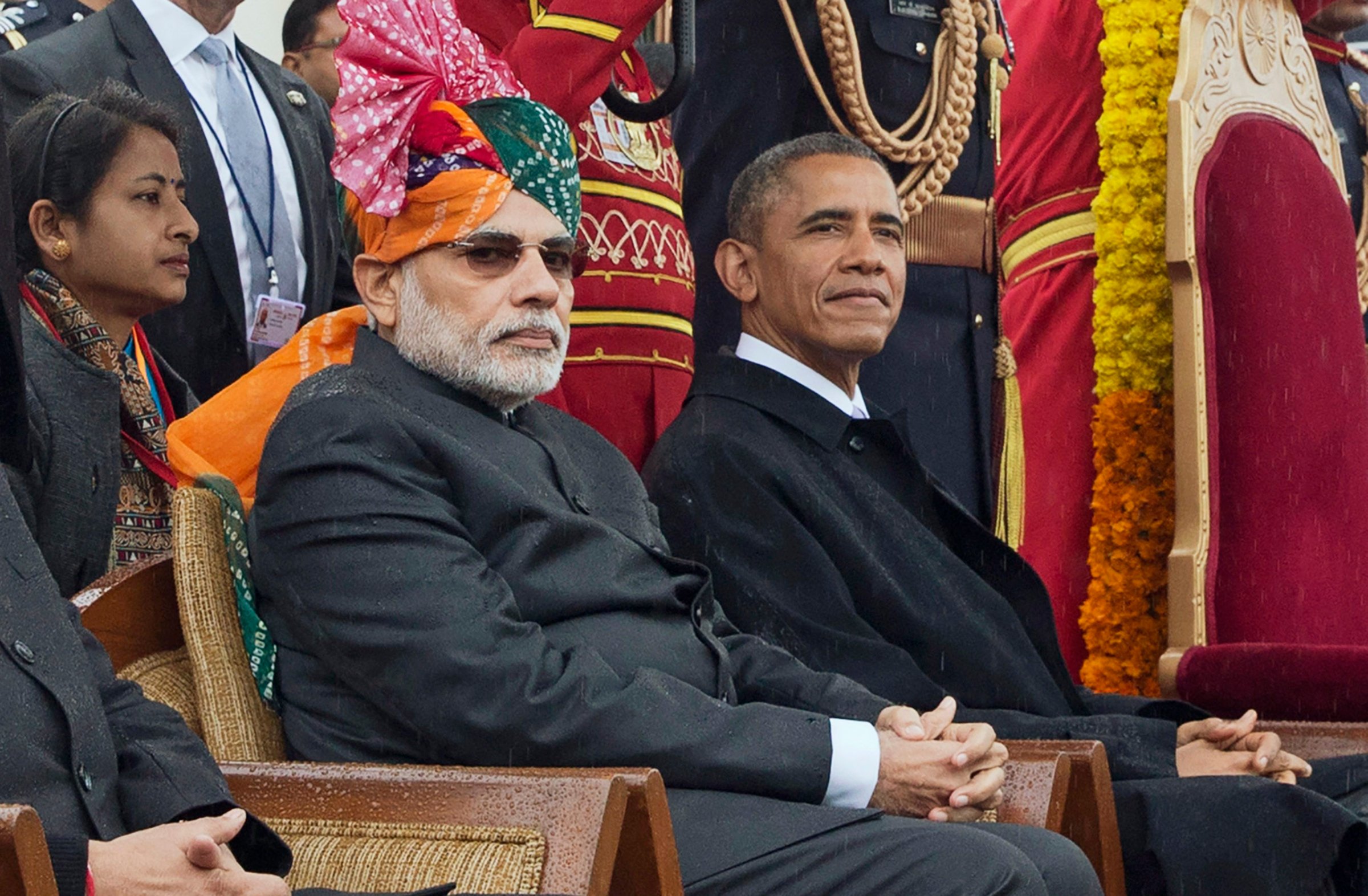
For fans of diplomatic theater, late January brought some rich performances to the Asian stage. First, on Jan. 25, U.S. President Barack Obama touched down in New Delhi for a symbolic bear hug between the U.S. and India. (There was also a literal one—Indian Prime Minister Narendra Modi broke with protocol to embrace the U.S. leader on the tarmac.)
Obama was there to attend India’s Republic Day celebrations on Jan. 26, the centerpiece of which was a parade of defense hardware and floats from India’s states. Braving New Delhi’s grimy air—considered the most polluted in the world—and a smattering of rain, the President spent two hours outside watching a procession of mainly Russian-made weapons that reflected India’s Cold War–era ties to the old Soviet bloc. But there were also newer U.S.-made C-130J transport and P-8I surveillance planes that signified India’s shifting alliances as Washington cultivates a regional counter to an increasingly assertive China.
China was on the agenda on the eve of the parade, when Obama and Modi called for peace and security in the region in an unusually sweeping joint strategic vision. Without naming Beijing—though there was little need—they called for calm in the South China Sea, where India’s northern neighbor is involved in long-running territorial disputes with smaller Southeast Asian nations.
Beijing noticed. As Obama landed in Delhi, China rolled out the red carpet for visiting Pakistani army chief Raheel Sharif. The next day, a commentary in the Global Times, a Chinese newspaper with close government ties, warned against the West’s “ulterior motives” in cozying up to New Delhi.
But the motives are anything but ulterior. As Milan Vaishnav, an analyst at the Carnegie Endowment for International Peace in Washington, notes, “You can track the interest and level of engagement in Washington with India by watching the [Indian] GDP growth rate.” And right now things are looking up for the Indian economy.
Ever since the economic reforms of the early 1990s, India has held out the promise of providing a democratic alternative to a fast-growing but authoritarian China. For years, though, that promise has gone unfulfilled. While India has made significant strides, businesses still face a maze of obstructive regulations that have kept the country well behind China.
It is no coincidence, then, that the warming of U.S.-India ties and the deepening of the two countries’ strategic links come amid excitement about Modi’s ability to finally demolish these restrictions. In 2005 he was barred from entering the U.S. in connection with the 2002 sectarian riots in the state of Gujarat, where he was chief minister and his Hindu nationalist Bharatiya Janata Party was in power. Over 1,000 people died, most of them Muslim. (While his critics question whether he did enough to stop the violence, Modi denies any wrongdoing and has never been found culpable by Indian courts.)
The focus, though, has shifted from Modi’s past to his promises during his election campaign last year to render India more business-friendly. Both the International Monetary Fund and the World Bank now predict that Indian growth, which fell by about half in recent years, could soon outpace China’s. Modi has also been lucky: the low price of oil is a boon for a country like India, which imports about 80% of the crude oil it needs.
But Modi still has much to do. Although his party has a majority in the lower chamber of India’s Parliament, it lacks the numbers to push through laws in the upper house. And so—like Obama—he has been resorting to executive orders to tackle controversial issues like simplifying the acquisition of land for industrial projects. But such moves are temporary and must eventually be ratified by Parliament. In the short term, he faces a test in February, when his government will present its second budget, after its first failed to excite the markets last year.
Still, Modi is less than a quarter through a five-year-term. Executives in New Delhi are optimistic that the Prime Minister will deliver on his promises, citing the signals sent out by his executive orders. Obama will be hoping the same, for his visit signified closer relations between the two democracies—and a bet that the new Indian leader can finally realize his country’s potential.
More Must-Reads from TIME
- Cybersecurity Experts Are Sounding the Alarm on DOGE
- Meet the 2025 Women of the Year
- The Harsh Truth About Disability Inclusion
- Why Do More Young Adults Have Cancer?
- Colman Domingo Leads With Radical Love
- How to Get Better at Doing Things Alone
- Michelle Zauner Stares Down the Darkness
Contact us at letters@time.com